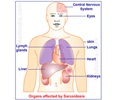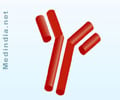Causes of Chronic Granulomatous Disease (CGD)
In Chronic granulomatous disease the white cells of the body or phagocytic cells are unable to kill certain bacteria and fungi. This situation arises due to a defect in nicotinamide adenine dinucleotide phosphate (NADPH) oxidase activity. NADPH oxidase is a membrane bound enzyme complex that takes part in the generation of superoxides or
Hence CGD patients are susceptible to infections with a special subset of bacteria and fungi, especially the ones that require hydrogen peroxide for control.
CGD patients are immune to most viruses and to some kinds of bacteria and fungi; hence they are necessarily not infected all the time.














